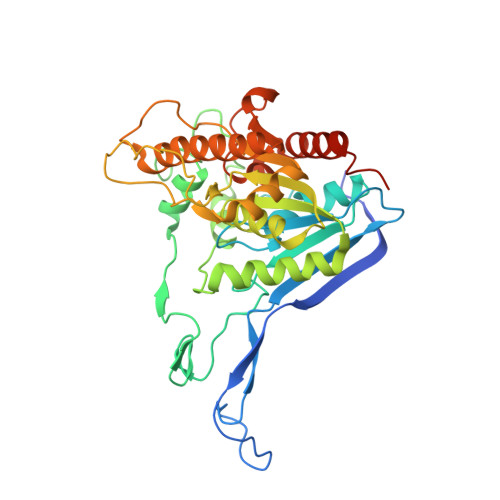Crystal structures of herbicide-detoxifying esterase reveal a lid loop affecting substrate binding and activity.
Liu, B., Wang, W., Qiu, J., Huang, X., Qiu, S., Bao, Y., Xu, S., Ruan, L., Ran, T., He, J.(2023) Nat Commun 14: 4343-4343
- PubMed: 37468532
- DOI: https://doi.org/10.1038/s41467-023-40103-5
- Primary Citation of Related Structures:
7Y0L, 7YD2, 8GOL, 8GOY, 8GP0, 8IVE, 8IVM, 8IVN, 8IVS, 8IVT, 8IW3, 8IW6, 8J7G, 8J7J, 8J7K - PubMed Abstract:
SulE, an esterase, which detoxifies a variety of sulfonylurea herbicides through de-esterification, provides an attractive approach to remove environmental sulfonylurea herbicides and develop herbicide-tolerant crops. Here, we determined the crystal structures of SulE and an activity improved mutant P44R. Structural analysis revealed that SulE is a dimer with spacious binding pocket accommodating the large sulfonylureas substrate. Particularly, SulE contains a protruding β hairpin with a lid loop covering the active site of the other subunit of the dimer. The lid loop participates in substrate recognition and binding. P44R mutation altered the lid loop flexibility, resulting in the sulfonylurea heterocyclic ring repositioning to a relative stable conformation thus leading to dramatically increased activity. Our work provides important insights into the molecular mechanism of SulE, and establish a solid foundation for further improving the enzyme activity to various sulfonylurea herbicides through rational design.
- Key Laboratory of Agricultural Environmental Microbiology of Ministry of Agriculture, College of Life Sciences, Nanjing Agricultural University, Nanjing, 210095, China.
Organizational Affiliation:



















